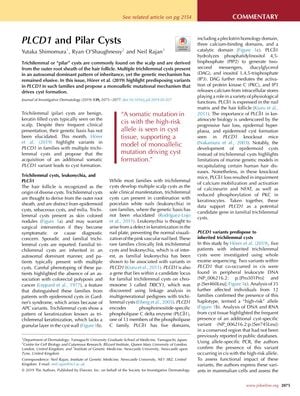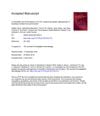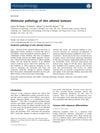PLCD1 and Pilar Cysts
October 2019
in “
The journal of investigative dermatology/Journal of investigative dermatology
”
PLCD1 trichilemmal cysts whole exome sequencing peripheral leukocyte DNA high-risk allele cyst-specific variant PLC81 function channel activation diacylglycerol species two-hit model skin homeostasis hereditary trichilemmal cysts genetic basis of cysts skin cysts genetic sequencing blood DNA genetic risk cyst variant gene function cell signaling lipid production genetic model skin balance inherited cysts

TLDR The research linked PLCD1 gene variants to the development of trichilemmal cysts.
The study by Hörer et al. (2019) focused on the genetic underpinnings of trichilemmal cysts and involved whole exome sequencing of five patients with inherited forms of these cysts. The research identified two variants in the PLCD1 gene in peripheral leukocyte DNA and confirmed the presence of a "high-risk" allele in 35 individuals from 12 families. Additionally, a cyst-specific variant was discovered in cyst tissue, which appeared to impair normal PLC81 function, as evidenced by functional assays showing reduced channel activation and diacylglycerol species production. These findings suggest a "two-hit" model for cyst formation, where a pre-existing "high-risk" allele in the PLCD1 gene is followed by an additional somatic variant that triggers cyst development, highlighting the importance of PLCD1 in skin homeostasis and the genetic basis of hereditary trichilemmal cysts.


